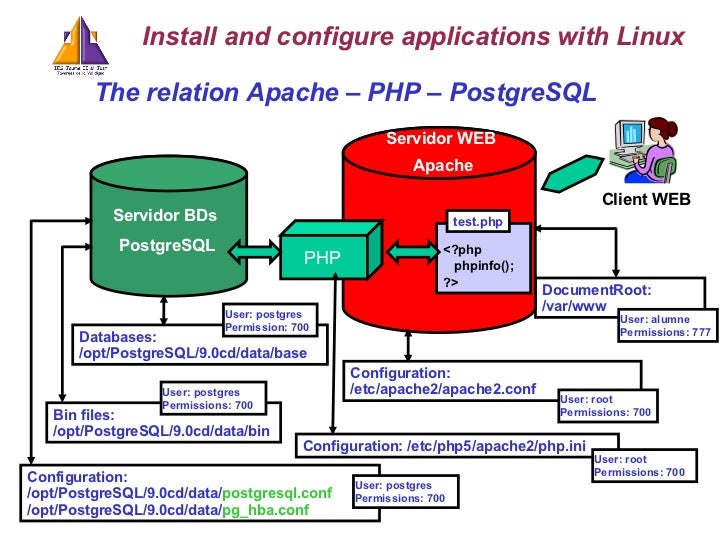How To Install Apache With Php On Linux
Step One—Install Apache. Apache is a free open source software which runs over 50% of the world’s web servers. To install apache, open terminal and type in this command: sudo yum install httpd. Once it installs, you can start apache running on your VPS: sudo service httpd start. This term is actually an acronym which represents the Linux operating system, with the Apache web server. The site data is stored in a MySQL database, and dynamic content is processed by PHP. In this guide, we'll get a LAMP stack installed on an Ubuntu 16.04 Droplet.
So you have a website, but now you need a platform to host it on. You could use one of the many website-hosting providers out there, or you could try to host your website yourself with your own web server.
How To Install Configure Apache Php Postgresql On Linux
Since Apache is free, it's one of the most popular web servers to install. It also has several features that make it useful for many different types of websites. So, what is Apache? In a nutshell, it is a server used for everything from personal web pages to enterprise-level sites. It is as versatile as it is popular.
You will be able to get the facts on how to install Apache on a Linux system with this article's overview. Before you begin, however, you should at least be comfortable working in Linux - including being able to change directories, using tar and gunzip and compiling with make (we'll discuss where to get binaries if you don't want to try compiling your own). You should also have access to the root account on the server machine. Again, if this confuses you, you can always turn to a commodity hosting provider instead of doing it yourself.

Download Apache
It's best to download the latest stable release of Apache as you begin. The best place to get Apache is from the Apache HTTP Server download site. Download the source files appropriate to your system. Binary releases for some operating systems are available from this site as well.
Extract the Apache Files
Once you've downloaded the files you will need to uncompress them:
This creates a new directory under the current directory with the source files.
Install Php On Windows
Configuring Your Server for Apache
Once you have the files available, you need to instruct your machine where to find everything by configuring the source files. The easiest way to do this is to accept all the defaults and just type:
Of course, most people don't want to accept just the default choices that are presented to them. The most important option is the
option. This specifies the directory where the
will be installed. You can also set specific environment variables and modules. Some of the
Hp pavilion zv6000 memory. you might like to have installed include:
- mod_alias - to map different parts of the URL tree
- mod_include - to parse Server Side Includes
- mod_mime - to associate file extensions with its MIME-type
- mod_rewrite - to rewrite URLs on the fly
- mod_speling (sic) - to help your readers who might misspell URLs
- mod_ssl - to allow for strong cryptography using SSL
- mod_userdir - to allow system users to have their own web page directories
Please keep in mind that these aren't all the modules you might install on a given system - the particular project will depend on what you install, but this above list is a good starting point. Read more about the details about the modules to determine which ones you need.
Build Apache
As with any source installation, you'll then need to build the installation:
Customize Apache

Assuming that there were no problems with your install and build, you are ready to customize your Apache configuration. This really just amounts to editing the httpd.conf file. This file is located in the PREFIX/conf directory. We generally edit it with text editor.
Follow the instructions in this file to edit your configuration the way you want it. More help is available on the Apache website. You can always turn to that site for additional information and resources.
Test Your Apache Server
Open a web browser on the same machine and type
in the address box. You should see a page similar to the one in the partial screenshot above (the image that accompanies this article). It will say in big letters
This is good news, as it means your
is installed correctly.
Start Editing/Uploading Pages to Your Newly Installed Apache Web Server
Once your server is up and running you can start posting pages. Have fun building your website! Canon driver download windows 10.